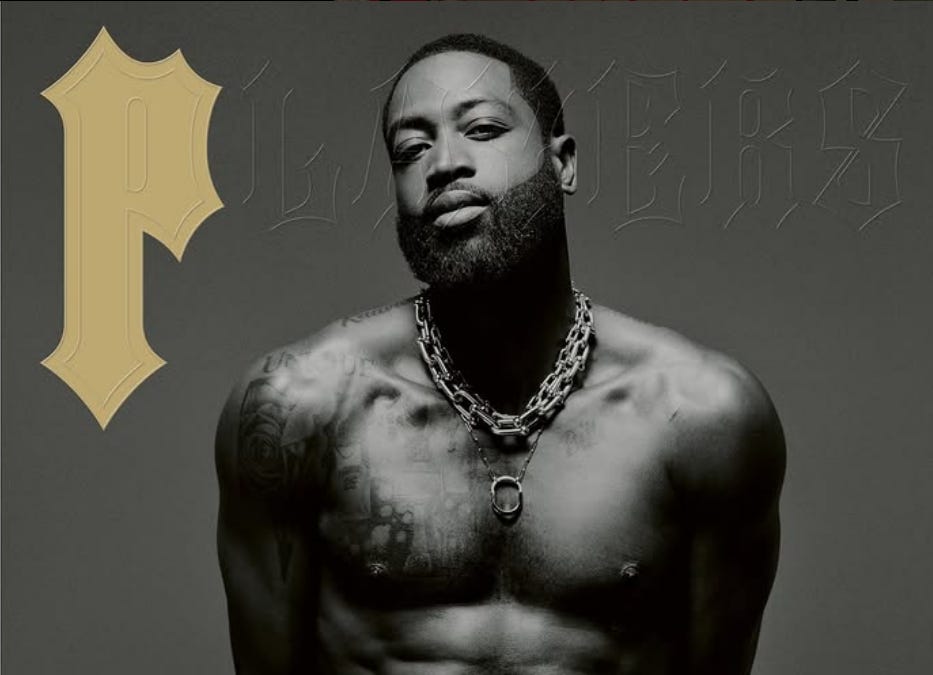How Dwyane Wade and ‘Players’ Magazine Are Rewriting the Rules of Sports and Style
From the Met Gala to Milan, athletes are no longer just fashion’s muses — they’re becoming its authors. With Players, Dwyane Wade is leading a new chapter.
Dwyane Wade Didn’t Go to the Met Gala for the Photos. He Went for the Intel.
At a glance, Wade’s appearance at the 2024 Met Gala looked like standard celebrity fare: red carpet, designer threads, the flash of a thousand cameras. But beneath the spectacle was strategy. Wade wasn’t just dressing up; he was collecting data.
The NBA Hall of Famer has stepped into the role of guest editor for Players, a new biannual magazine devoted entirely to athletes and style. It's not another lifestyle vanity project, it's a culturally calculated play that signals just how far the athlete-fashion relationship has evolved, and who’s now calling the creative shots.
The magazine is the brainchild of Vladimir Restoin Roitfeld, son of Carine Roitfeld, the former editor of French Vogue. Known for pushing the edge of fashion publishing, the Roitfelds are now turning their gaze to sport. But not just any sport, sport as culture, as persona, as market influence. And in Wade, they’ve found the perfect co-pilot.
“You can’t think about fashion without thinking of athletes now,” Wade told The New York Times. “But it wasn’t always that way.”
He's right. This didn't happen overnight. The presence of athletes at fashion week, on magazine covers, and in high-fashion campaigns has become routine, but the infrastructure that made that possible was built brick by brick by pioneers like Dennis Rodman, David Beckham, and Wade himself.
Wade’s own fashion journey traces back to 2008. At the time, he began seeing clothing not just as personal style but as a microphone, a way to broadcast values, politics, and ambitions. That shift deepened in 2012, when he donned a hoodie in honour of Trayvon Martin, using fashion as protest. That moment marked a turning point, Wade wasn’t just dressing well; he was communicating through clothes.
Today, Wade is not only a front-row fixture but a respected voice across the cultural spectrum, from game-show host to philanthropist. And now, with Players, he's using that credibility to give others a platform.
The debut issue of Players is basketball-focused and visually interesting. It features ten different covers, including Michael Jordan, Spike Lee, the New York Liberty, and Wade himself, all shot by elite fashion photographers such as Nick Knight, Quil Lemons, and Mario Sorrenti. The wardrobe? Fear of God, Louis Vuitton, Balenciaga.
This isn’t tunnel walk content repackaged. This is high fashion filtered through the lens of sport, and the athletes are no longer just the subjects; they’re part of the editorial brain trust.
And it’s this dual respect for both the sports and fashion ecosystems that makes Players so promising. Vladimir Restoin Roitfeld understood this early.
“Actors try to have a more discreet life,” he said. “But for athletes, fashion has always been important in building an identity.”
Where Players breaks new ground is in its ambition to serve both audiences: sports fans curious about the off-field lives of their heroes, and fashion lovers looking for fresh faces and narratives. In doing so, it bridges a growing cultural divide — one that’s been ripe for connection for years.
Follow me on Instagram for more sports-related content.
Why Now? The Numbers Don’t Lie
The rise of social media has dramatically shifted the fashion landscape. Ten years ago, designers weren’t sure whether an athlete could move the needle. Now? Pro athletes can 10’s and 100’s of millions of followers to the table, more than most actors or models. Their fit pics go viral. Their fashion week appearances headline mainstream media. Their presence equals brand awareness, validation, and sales.
What Wade is doing with this first edition of Players is establishing a cultural touchpoint that formalises this shift.
The broader vision is even more ambitious. Players is already planning special-edition handouts tied to key sports events, the WNBA season opener, the French Open, and Wimbledon. These mini “fanzines” will bring fashion-focused storytelling directly to sports venues, further collapsing the wall between style and stadium.
A football-themed issue is also on the horizon, slated to align with the 2026 World Cup in North America. If successful, this format could become a blueprint for how publishers build brand ecosystems around athletic fashion, not just reacting to the culture, but steering it.
Wade, for his part, sees it as legacy work.
“I think it’d be great for brands to collaborate more with athletes,” he said. “Not just showing up, but really having a big impact.”
The appetite is there. But what Players signals is a new kind of demand, not just for endorsement, but authorship.
This is about cultural capital. About expanding the image of athletes beyond the court, field, or track. About giving them the tools and the respect, to shape how they’re seen.
The Roitfelds aren’t just making a magazine. They’re building a platform for identity expression at a time when athletes are some of the most followed, discussed, and marketed individuals on the planet.
And the rest of culture? It’s catching up fast.
Thanks for reading, David Skilling.
Follow me for more on LinkedIn | Instagram
If you know someone who’ll enjoy this article, please share it with them.




